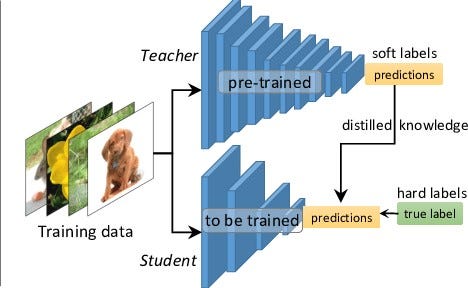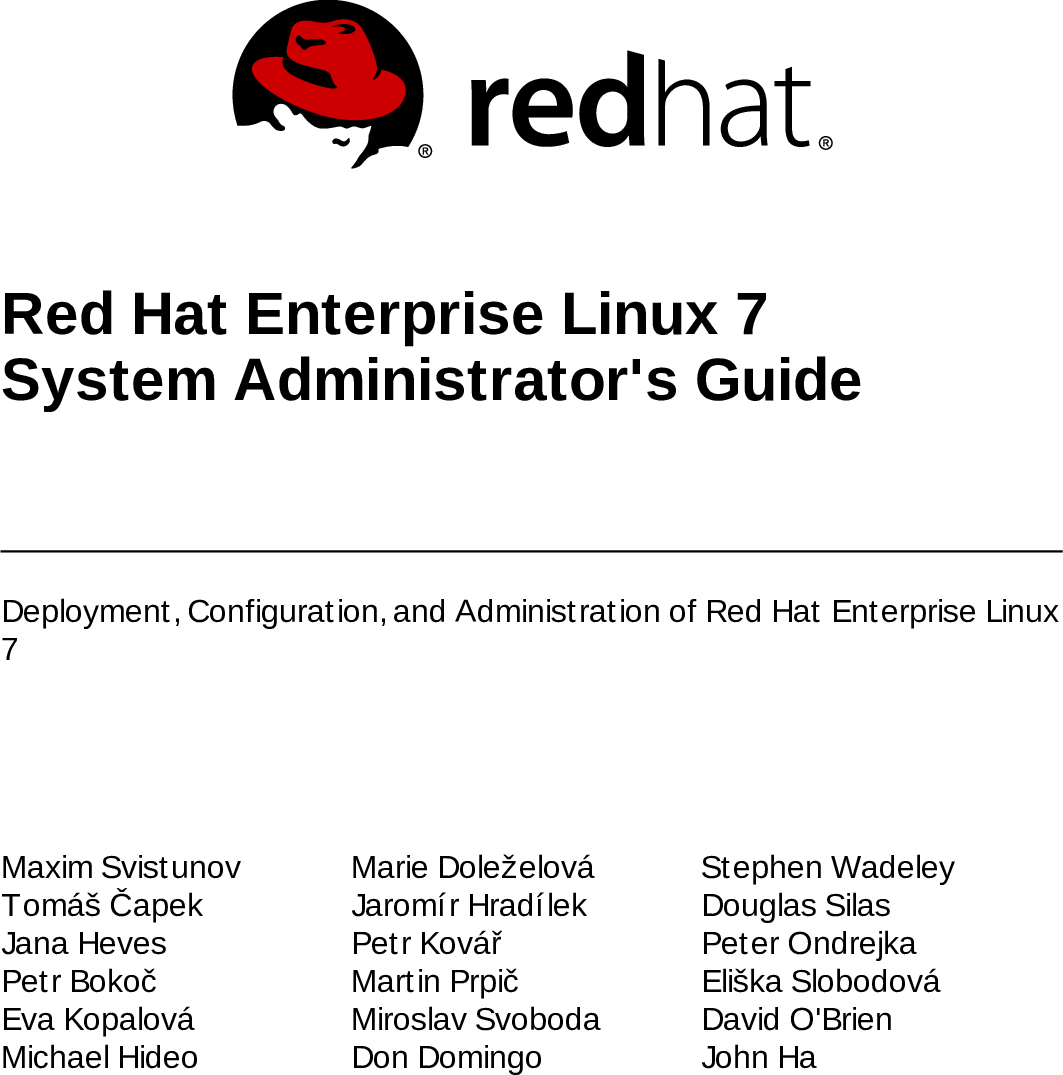38 soft labels machine learning
Unsupervised Machine Learning: Examples and Use Cases - AltexSoft More often than not unsupervised learning deals with huge datasets which may increase the computational complexity. Despite these pitfalls, unsupervised machine learning is a robust tool in the hands of data scientists, data engineers, and machine learning engineers as it is capable of bringing any business of any industry to a whole new level. python - scikit-learn classification on soft labels ... Cross-entropy loss function can handle soft labels in target naturally. It seems that all loss functions for linear classifiers in scikit-learn can only handle hard labels. So the question is probably: How to specify my own loss function for SGDClassifier, for example.
ARIMA for Classification with Soft Labels | by Marco ... In this post, we introduced a technique to carry out classification tasks with soft labels and regression models. Firstly, we applied it with tabular data, and then we used it to model time-series with ARIMA. Generally, it is applicable in every context and every scenario, providing also probability scores.

Soft labels machine learning
Machine learning - Wikipedia Machine learning (ML) is the study of computer algorithms that can improve automatically through experience and by the use of data. It is seen as a part of artificial intelligence.Machine learning algorithms build a model based on sample data, known as training data, in order to make predictions or decisions without being explicitly programmed to do so. Clustering in Machine Learning: 3 Types of ... - upGrad blog Nov 30, 2020 · Introduction Machine Learning is one of the hottest technologies in 2020, as the data is increasing day by day the need of Machine Learning is also increasing exponentially. Machine Learning is a very vast topic that has different algorithms and use cases in each domain and Industry. One of which is Unsupervised Learning in which […] Semi-Supervised Learning With Label Propagation Nodes in the graph then have label soft labels or label distribution based on the labels or label distributions of examples connected nearby in the graph. Many semi-supervised learning algorithms rely on the geometry of the data induced by both labeled and unlabeled examples to improve on supervised methods that use only the labeled data.
Soft labels machine learning. Regression - Features and Labels - Python Programming With supervised learning, you have features and labels. The features are the descriptive attributes, and the label is what you're attempting to predict or forecast. Another common example with regression might be to try to predict the dollar value of an insurance policy premium for someone. Pseudo Labelling - A Guide To Semi-Supervised Learning There are 3 kinds of machine learning approaches- Supervised, Unsupervised, and Reinforcement Learning techniques. Supervised learning as we know is where data and labels are present. Unsupervised Learning is where only data and no labels are present. Reinforcement learning is where the agents learn from the actions taken to generate rewards. [1809.01833v1] Wasserstein Soft Label Propagation on ... Inspired by recent interests of developing machine learning and data mining algorithms on hypergraphs, we investigate in this paper the semi-supervised learning algorithm of propagating "soft labels" (e.g. probability distributions, class membership scores) over hypergraphs, by means of optimal transportation. Knowledge distillation in deep learning and its ... Soft labels refers to the output of the teacher model. In case of classification tasks, the soft labels represent the probability distribution among the classes for an input sample. The second category, on the other hand, considers works that distill knowledge from other parts of the teacher model, optionally including the soft labels.
What is data labeling? In machine learning, data labeling is the process of identifying raw data (images, text files, videos, etc.) and adding one or more meaningful and informative labels to provide context so that a machine learning model can learn from it. For example, labels might indicate whether a photo contains a bird or car, which words were uttered in an ... UCI Machine Learning Repository: Mushroom Data Set In Proceedings of the 5th International Conference on Machine Learning, 73-79. Ann Arbor, Michigan: Morgan Kaufmann. Duch W, Adamczak R, Grabczewski K (1996) Extraction of logical rules from training data using backpropagation networks, in: Proc. of the The 1st Online Workshop on Soft Computing, 19-30.Aug.1996, pp. 25-30, Label smoothing with Keras, TensorFlow, and Deep Learning ... This type of label assignment is called soft label assignment. Unlike hard label assignments where class labels are binary (i.e., positive for one class and a negative example for all other classes), soft label assignment allows: The positive class to have the largest probability While all other classes have a very small probability Machine Learning - Hierarchical Clustering - Tutorialspoint Machine Learning - Hierarchical Clustering, Hierarchical clustering is another unsupervised learning algorithm that is used to group together the unlabeled data points having similar characteristics.
Labeling images and text documents - Azure Machine Learning No machine learning model has 100% accuracy. While we only use data for which the model is confident, these data might still be incorrectly prelabeled. When you see labels, correct any wrong labels before submitting the page. Especially early in a labeling project, the machine learning model may only be accurate enough to prelabel a small ... What is the difference between soft and hard labels ... Soft Label = probability encoded e.g. [0.1, 0.3, 0.5, 0.2] Soft labels have the potential to tell a model more about the meaning of each sample. 6 More posts from the learnmachinelearning community 734 Posted by 5 days ago 2 Project Started learning ML 2 years, now using GPT-3 to automate CV personalisation for job applications! Understanding Deep Learning on Controlled Noisy Labels In "Beyond Synthetic Noise: Deep Learning on Controlled Noisy Labels", published at ICML 2020, we make three contributions towards better understanding deep learning on non-synthetic noisy labels. First, we establish the first controlled dataset and benchmark of realistic, real-world label noise sourced from the web (i.e., web label noise ... How to Label Data for Machine Learning: Process and Tools ... Data labeling (or data annotation) is the process of adding target attributes to training data and labeling them so that a machine learning model can learn what predictions it is expected to make. This process is one of the stages in preparing data for supervised machine learning.
Preparing Medical Imaging Data for Machine Learning - PMC Feb 18, 2020 · Learning Objectives: After reading the article and taking the test, the reader will be able to: List the different steps needed to prepare medical imaging data for development of machine learning models Discuss the new approaches that may help address data availability to machine learning research in the future
How To Label Data for Machine Learning: Data Labelling in Machine Learning & AI - Soft2Share
machine learning - What is the difference between a ... I'm following a tutorial about machine learning basics and there is mentioned that something can be a feature or a label. From what I know, a feature is a property of data that is being used. I can't figure out what the label is, I know the meaning of the word, but I want to know what it means in the context of machine learning.
Efficient Learning of Classification Models from Soft ... soft-label further refining its class label. One caveat of apply- ing this idea is that soft-labels based on human assessment are often noisy. To address this problem, we develop and test a new classification model learning algorithm that relies on soft-label binning to limit the effect of soft-label noise. We
Learning classification models with soft-label information Materials and methods: Two types of methods that can learn improved binary classification models from soft labels are proposed. The first relies on probabilistic/numeric labels, the other on ordinal categorical labels. We study and demonstrate the benefits of these methods for learning an alerting model for heparin induced thrombocytopenia.
PDF Efficient Learning with Soft Label Information and ... Note that our learning from auxiliary soft labels approach is complementary to active learning: while the later aims to select the most informative examples, we aim to gain more useful information from those selected. This gives us an opportunity to combine these two 3 approaches. 1.2 LEARNING WITH MULTIPLE ANNOTATORS
How to Label Data for Machine Learning in Python - ActiveState Data labeling in Machine Learning (ML) is the process of assigning labels to subsets of data based on its characteristics. Data labeling takes unlabeled datasets and augments each piece of data with informative labels or tags. Most commonly, data is annotated with a text label.
Is it okay to use cross entropy loss function with soft ... In the case of 'soft' labels like you mention, the labels are no longer class identities themselves, but probabilities over two possible classes. Because of this, you can't use the standard expression for the log loss. But, the concept of cross entropy still applies. In fact, it seems even more natural in this case.
[2009.09496] Learning Soft Labels via Meta Learning - arXiv Learning Soft Labels via Meta Learning Nidhi Vyas, Shreyas Saxena, Thomas Voice One-hot labels do not represent soft decision boundaries among concepts, and hence, models trained on them are prone to overfitting. Using soft labels as targets provide regularization, but different soft labels might be optimal at different stages of optimization.
Learning Soft Labels via Meta Learning - Apple Machine ... Learning Soft Labels via Meta Learning View publication Copy Bibtex One-hot labels do not represent soft decision boundaries among concepts, and hence, models trained on them are prone to overfitting. Using soft labels as targets provide regularization, but different soft labels might be optimal at different stages of optimization.
How to Label Image Data for Machine Learning and Deep ... Anolytics can label all types of images for machine learning and deep learning algorithm training. It is annotating images using the various techniques like bounding box, semantic segmentation, polygon annotation, polyline annotation and landmarking annotation or cuboid annotation to make the object of interest easily recognizable to machines ...
Features and labels - Module 4: Building and evaluating ML ... Module 4: Building and evaluating ML models. After you have assessed the feasibility of your supervised ML problem, you're ready to move to the next phase of an ML project. This module explores the various considerations and requirements for building a complete dataset in preparation for training, evaluating, and deploying an ML model.
comparison - What is the definition of "soft label" and ... A soft label is one which has a score (probability or likelihood) attached to it. So the element is a member of the class in question with probability/likelihood score of eg 0.7; this implies that an element can be a member of multiple classes (presumably with different membership scores), which is usually not possible with hard labels.
The Ultimate Guide to Data Labeling for Machine Learning In machine learning, if you have labeled data, that means your data is marked up, or annotated, to show the target, which is the answer you want your machine learning model to predict. In general, data labeling can refer to tasks that include data tagging, annotation, classification, moderation, transcription, or processing.
Research - Apple Machine Learning Research Information Gain Propagation: A New Way to Graph Active Learning with Soft Labels paper | research area Methods and Algorithms | conference ICLR Published year 2022 Authors Wentao Zhang, Yexin Wang, Zhenbang You, Meng Cao, Ping Huang, Jiulong Shan , Zhi Yang, Bin Cui
How to Develop Voting Ensembles With Python Voting is an ensemble machine learning algorithm. For regression, a voting ensemble involves making a prediction that is the average of multiple other regression models. In classification, a hard voting ensemble involves summing the votes for crisp class labels from other models and predicting the class with the most votes. A soft voting ensemble involves summing the predicted probabilities ...
Label Smoothing: An ingredient of higher model accuracy ... These are soft labels, instead of hard labels, that is 0 and 1. This will ultimately give you lower loss when there is an incorrect prediction, and subsequently, your model will penalize and learn incorrectly by a slightly lesser degree.
Semi-Supervised Learning With Label Propagation Nodes in the graph then have label soft labels or label distribution based on the labels or label distributions of examples connected nearby in the graph. Many semi-supervised learning algorithms rely on the geometry of the data induced by both labeled and unlabeled examples to improve on supervised methods that use only the labeled data.














Post a Comment for "38 soft labels machine learning"